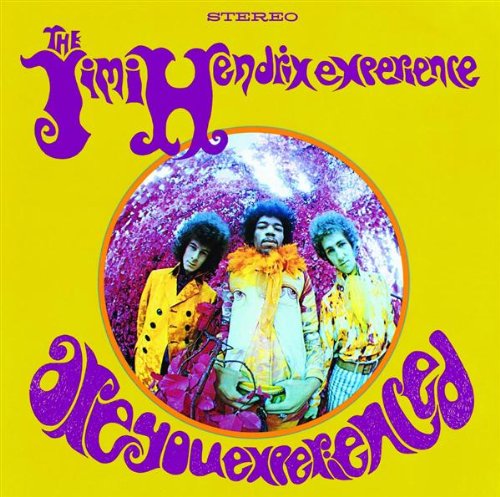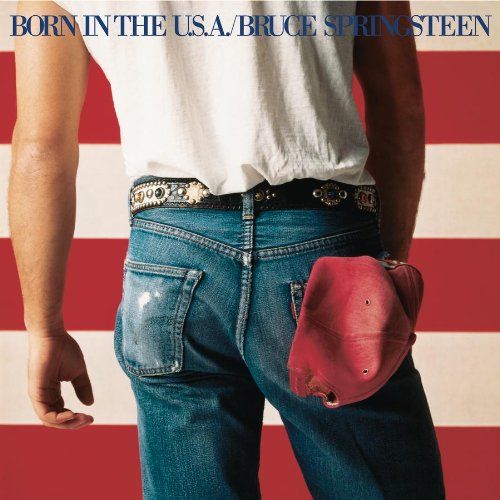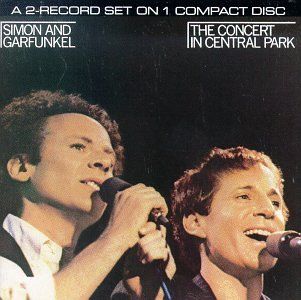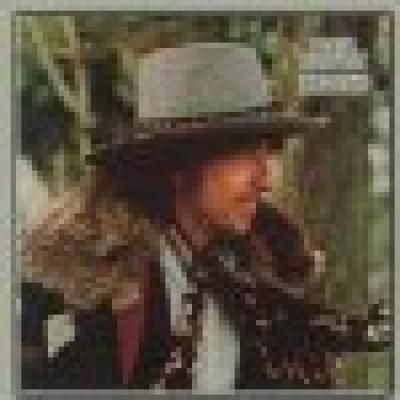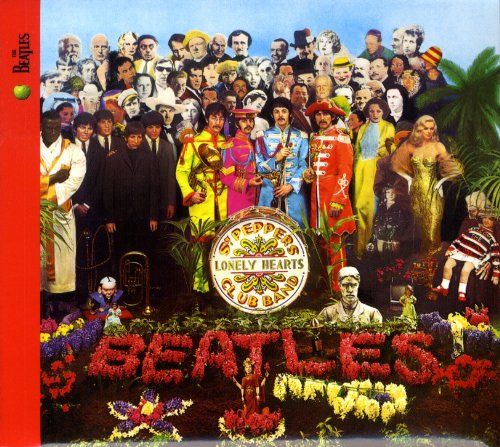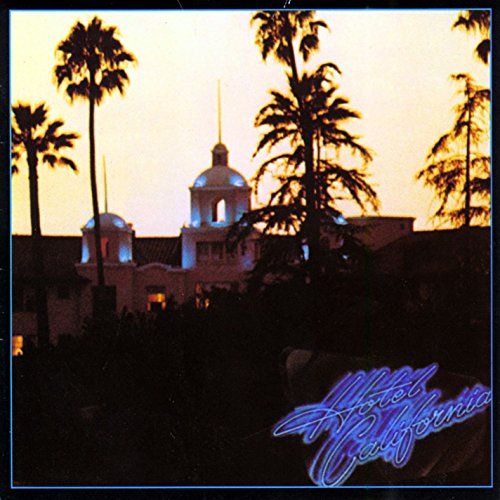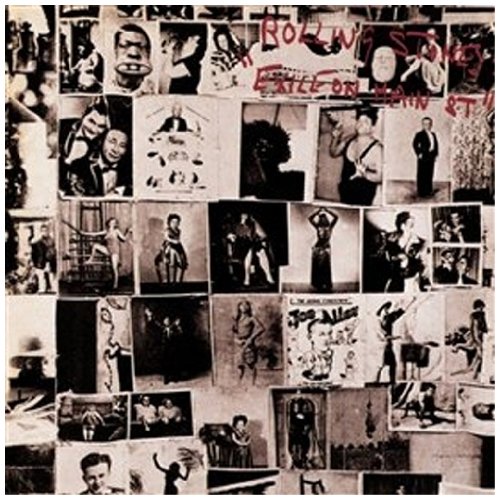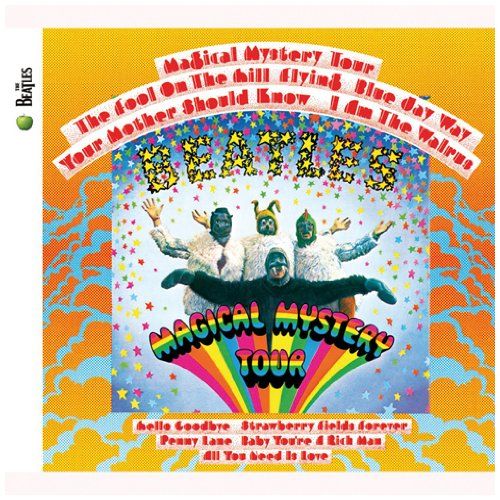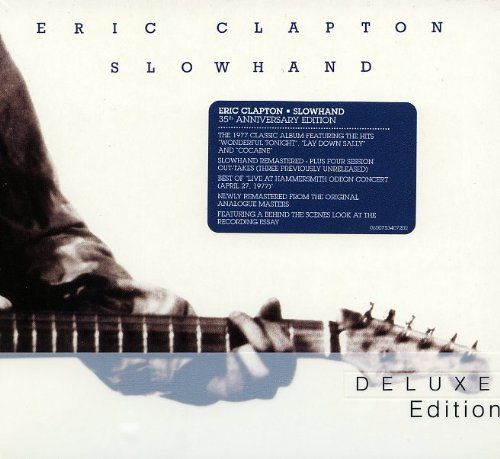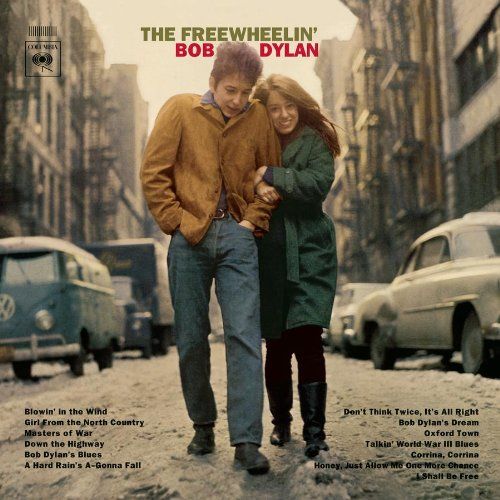P
Ma collection
Collection de papayou
Nombre de vinyles
24
Créée le
6 juil. 2014
Modifiée le
26 juil. 2014
Vinyles de la collection
Columbia, 1965
Bruce Springsteen described the beginning of "Like a Rolling Stone," the opening song on Highway 61 Revisited, as the "snare shot that sounded like somebody'd kicked open the door to your mind." Folk singer Phil Ochs was even more rhapsodic about the LP: "It's impossibly good... How can a human mind do this?"
Recorded in a staggering six days, Highway 61 Revisited named after the road that runs from Bob Dylan's home state of Minnesota down through the Mississippi Delta is one of those albums that changed everything. In and of itself, "Like a Rolling Stone," rumored to be about Andy Warhol acolyte Edie Sedgwick, forever altered the landscape of popular music its "vomiti?c" flow (Dylan's term), literary ambition and sheer length (6:13) shattered limitations of every kind. "Ballad of a Thin Man" delivered the definitive Sixties comment on the splintering hip-straight fault line: "Something is happening here, but you don't know what it is/Do you, Mister Jones?" If anyone questioned whether or not Dylan had truly ?"gone electric," the roaring rock & roll of ?"From a Buick 6" and "Tombstone Blues" powered by guitarist Mike Bloom?eld left no doubt.
The album ends with "Desolation Row," a surrealist night journey that runs 11 minutes. Dylan evokes a Hieronymus Bosch-like season in hell that seems to foretell all the Sixties cataclysms to come. "The Titanic sails at dawn," he sings wearily. "Everybody is shouting, 'Which side are you on?'" That "Desolation Row" is an all-acoustic track a last-minute decision on Dylan's part is one final stroke of genius: a spellbinding new vision of folk music to close the album that, for the time being at least, destroyed folk music.
RCA, 1972
This album documents one of the most elaborate self-mythologizing schemes in rock, as David Bowie created the glittery, messianic alter ego Ziggy Stardust ("well-hung and snow-white tan"). The glam rock Bowie made with guitarist Mick Ronson on tracks like "Hang on to Yourself" and "Suffragette City" is an irresistible blend of sexy, campy pop and blues power. The anthem "Ziggy Stardust" is one of rock's earliest, and best, power ballads. "I consider myself responsible for a whole new school of pretensions," Bowie said at the time. "They know who they are. Don't you, Elton? Just kidding. No, I'm not."
London, 1966
The first Stones album completely written by Jagger-Richards was full of bad-boy songs about Swinging London's overnight stars, groupies, hustlers and parasites. It's got tough riffs ("It's Not Easy"), girls seeking kicks ("Under My Thumb"), zooming psychedelia ("Paint It Black") and baroque-folk gallantry ("I Am Waiting").
Recording sessions
Dylan began work on his third album on August 6, 1963, at Columbia's Studio A in New York City. Once again, Tom Wilson was the producer for the entire album. Dylan had, by the time of recording, become a popular, influential cultural figure.
Eight songs were recorded during that first session, but only one recording of "North Country Blues" was ultimately deemed usable and set aside as the master take. A master take of "Seven Curses" was also recorded, but it was left out of the final album sequence.
Another session at Studio A was held the following day, this time yielding master takes for four songs: "Ballad of Hollis Brown", "With God on Our Side", "Only a Pawn in Their Game", and "Boots of Spanish Leather", all of which were later included on the final album sequence.
A third session was held in Studio A on August 12, but nothing from this session was deemed usable. However, three recordings taken from the third session eventually saw official release: "master" takes of "Paths of Victory", "Moonshine Blues" and "Only a Hobo" were all included on The Bootleg Series Volumes 13 (Rare & Unreleased) 19611991 released in 1991. In 2013, "Eternal Circle" and "Hero Blues" were included in the 1963 entry of The 50th Anniversary Collection.
Sessions did not resume for more than two months. During the interim, Dylan toured briefly with Joan Baez, performing a number of key concerts that raised his profile in the media. When Dylan returned to Studio A on October 23, he had six more original compositions ready for recording. Master takes for "The Lonesome Death of Hattie Carroll" and "When the Ship Comes In" were both culled from the October 23 session. A master take for "Percy's Song" was also recorded, but it was ultimately set aside and was not officially released until Biograph in 1985. An alternate take for "Percy's Song", a "That's All Right" (Arthur Crudup)/"Sally Free and Easy" (Cyril Tawney) medley and "East Laredo Blues" were released in 2013 on the 1963 entry of The 50th Anniversary Collection.
Another session was held the following day, October 24. Master takes of "The Times They Are a-Changin'" and "One Too Many Mornings" were recorded and later included in the final album sequence. A master take for "Lay Down Your Weary Tune" was also recorded, but ultimately left out of the final album; it was eventually released on Biograph. Two more outtakes, "Eternal Circle" and "Suze (The Cough Song)", were later issued on The Bootleg Series Volumes 1-3 (Rare & Unreleased) 1961-1991. A final outtake, "New Orleans Rag", was released in 2013 on "The 50th Anniversary Collection".
The sixth and final session for The Times They Are a-Changin' was held on October 31, 1963. The entire session focused on one song"Restless Farewell"whose melody is taken from an Irish-Scots folk song, "The Parting Glass", and it produced a master take that ultimately closed the album.
The songs
The Times They Are a-Changin' opens with the title track, one of Dylan's most famous songs. Dylan's friend, Tony Glover, recalls visiting Dylan's apartment in September 1963, where he saw a number of song manuscripts and poems lying on a table. "The Times They Are a-Changin'" had yet to be recorded, but Glover saw its early manuscript. After reading the words "come senators, congressmen, please heed the call", Glover reportedly asked Dylan: "What is this shit, man?", to which Dylan responded, "Well, you know, it seems to be what the people like to hear".
Dylan recalled writing the song as a deliberate attempt to create an anthem of change for the moment. In 1985, he told Cameron Crowe: ""This was definitely a song with a purpose. It was influenced of course by the Irish and Scottish ballads ...'Come All Ye Bold Highway Men', 'Come All Ye Tender Hearted Maidens'. I wanted to write a big song, with short concise verses that piled up on each other in a hypnotic way. The civil rights movement and the folk music movement were pretty close for a while and allied together at that time."
The climactic lines of the final verse: "The order is rapidly fadin'/ And the first one now/ Will later be last/ For the times they are a-changin' have a Biblical ring, and several critics have connected them with lines in the Gospel of Mark, 10:31, ""But many that are first shall be last, and the last first."
A self-conscious protest song, it is often viewed as a reflection of the generation gap and of the political divide marking American culture in the 1960s. Dylan, however, disputed this interpretation in 1964, saying "Those were the only words I could find to separate aliveness from deadness. It had nothing to do with age." A year later, Dylan would say: "I can't really say that adults don't understand young people any more than you can say big fishes don't understand little fishes. I didn't mean "The Times They Are a-Changin'" as a statement... It's a feeling."
In 1994, Dylan licensed the "The Times They Are a-Changin'" to be used in an advertisement for the auditing and accountancy firm Coopers & Lybrand, as performed by Richie Havens. Two years later, in 1996, a version of the song by Pete Seeger was used in a TV advertisement for the Bank of Montreal. This song was also used as the background track to the opening montage in the movie Watchmen.
"Ballad of Hollis Brown" was originally recorded for Dylan's previous album, The Freewheelin' Bob Dylan. That version was rejected and the song was eventually re-recorded for The Times They Are a-Changin'. Described by Clinton Heylin as a "'tragic tale of independence and free will' culled from the folk idiom", it is a grim, rural Gothic story of a father killing his starving family ("There's seven people dead on a South Dakota farm").
"With God on Our Side" was first performed at New York's Town Hall on April 12, 1963 (which also happened to be Dylan's debut appearance at that venue). Although Dylan claims it is an original composition, the melody to "With God on Our Side" bears a striking resemblance to "The Patriot Game", the lyrics of which were written by Dominic Behan and the melody borrowed from the traditional Irish folk song, "The Merry Month Of May". Behan called Dylan a plagiarist and a thief, in an attempt to goad Dylan into a lawsuit; Dylan made no response. "The Patriot Game" was originally introduced to Dylan by Scottish folksinger Nigel Denver. Scottish song writer Jim McLean recalls Dylan asking him in late 1962: "'What does it mean, 'Patriot Game'?'... I explainedprobably lectured himabout Dr Johnson, who's one of Dominic's favourite writers, and that's where Dominic picked up [the] saying: 'Patriotism is the last refuge of a scoundrel.'" Music critic Tim Riley writes: "'With God on Our Side' manages to voice political savvy mixed with generational naivete" as it "draws the line for those born long enough after World War I to find its issues blurry ('the reasons for fightin'/I never did get') and who view the forgiveness of the World War II Germans as a farce."
Dylan follows "With God on Our Side" with a soft, understated ballad: "One Too Many Mornings". "It's the sound of someone too smitten by love to harbor regrets, grown too independent to consider a reunion," writes Riley. One of the more celebrated songs on The Times They Are a-Changin', Dylan would dramatically rearrange it on his legendary 1966 concert tour for a full electric band.
"North Country Blues" tells the story of a mining company's decision to outsource its operations to countries where labor costs are cheaper than in the U.S.A. ("It's much cheaper down in the South American towns/Where the miners work almost for nothing".) The song marks the first time Dylan wrote a narrative from the point of view of a woman: the ex-wife of a miner whose work has disappeared. This song has been described by many critics as Dylan's portrait of his home town, Hibbing, Minnesota.
Dylan first performed "Only a Pawn in Their Game" at a voter registration rally in Greenwood, Mississippi. The song refers to the murder of Medgar Evers, who was the Mississippi leader of the NAACP. Civil rights activist Bernice Johnson would later tell critic Robert Shelton that "'Pawn' was the very first song that showed the poor white was as victimized by discrimination as the poor black. The Greenwood people didn't know that Pete [Seeger], Theo[dore Bikel] and Bobby [Dylan] were well known. (Seeger and Bikel were also present at the registration rally.) They were just happy to be getting support. But they really like Dylan down there in the cotton country."
The melody for "Boots of Spanish Leather" was inspired by Martin Carthy's arrangement of the English folk song "Scarborough Fair" (also the melody of an earlier Dylan composition, "Girl from the North Country"). Dylan learned Carthy's arrangement during his first trip to England in late 1962. After finishing his obligations in England (including a brief appearance in a BBC drama, Madhouse on Castle Street), Dylan traveled to Italy looking for his girlfriend, Suze Rotolo, apparently unaware that she had already returned to America (reportedly the same time Dylan left for England). While in Italy, Dylan created an early draft of "Boots of Spanish Leather". Salon.com critic Bill Wyman called the song "an abstract classic and one of the purest, most confounding folk songs of the time."
According to Dylan biographer Clinton Heylin, "When The Ship Comes In" was written in August 1963 "in a fit of pique, in a hotel room, after his unkempt appearance had led an impertinent hotel clerk to refuse him admission until his companion, Joan Baez, had vouched for his good character." Heylin speculates that "Jenny's Song" from Brecht and Weill's Threepenny Opera was also an inspiration: "As Pirate Jenny dreams of the destruction of all her enemies by a mysterious ship, so Dylan envisages the neophobes being swept aside in 'the hour when the ship comes in'." Dylan's former girlfriend Suze Rotolo recalls that her "interest in Brecht was certainly an influence on him. I was working for the Circle in the Square Theatre and he came to listen all the time. He was very affected by the song that Lotte Lenya's known for, 'Pirate Jenny'."
"The Lonesome Death of Hattie Carroll" tells the story of a hotel barmaid who died after being struck by a wealthy white man. The song was inspired by Dylan's reading a newspaper account of the incident which took place in a hotel in Maryland, in February 1963.
The closing song of the album, "Restless Farewell" takes its melody from the traditional Irish-Scots song, "The Parting Glass". Dylan's lyrics have an edge due to the way that Newsweek had treated Dylan. In a profile of the singer, published in October 1963, Dylan was portrayed as someone who had lied about his middle-class origins. Furthermore, it was implied that Dylan had plagiarised the lyrics of his best-known composition, "Blowin' in the Wind". Stung by these untrue allegations, Dylan composed a song about the pain of having "the dust of rumor" flung in his eyes. He swiftly recorded the work a few days after the Newsweek profile appeared on October 31, 1963. The album ends with Dylan's vow "I'll make my stand/ And remain as I am/ And bid farewell and not give a damn".
Outtakes
The sessions for The Times They Are a-Changin' produced a large surplus of songs, many of which were eventually issued on later compilations. According to Clinton Heylin, "perhaps the two best songs, "Percy's Song" and "Lay Down Your Weary Tune", would not make the final album, failing to fit within the narrow bounds Dylan had decided to impose on himself."
"'Lay Down Your Weary Tune'... along with 'Eternal Circle'... marked a new phase in Dylan's songwriting", writes Heylin. "It is the all-important link between the clipped symbolism of 'A Hard Rain's a-Gonna Fall' and the more self-conscious efforts to come the following year. A celebration of song itself, 'Lay Down Your Weary Tune' was also an admission that there were certain songs 'no voice can hope to hum'."
Riley describes "Lay Down Your Weary Tune" as "a hymn to music's instrumental spectrum... it's about the heightened awareness of nature and reality available to performer and listener in the course of a highly charged musical experience". The song is also rich in natural imagery, often in surreal, musical terms ("The cryin' rain like a trumpet sang/And asked for no applause"). Steven Goldberg writes that the song depicts nature "not as a manifestation of God but as containing God within its every aspect". The Byrds released their own celebrated version of "Lay Down Your Weary Tune" in 1965 on their critically acclaimed second album, Turn! Turn! Turn!.
"Percy's Song" is sung from the point of view of a man who visits a judge in a futile, last-ditch attempt to save his friend from a severe prison sentence. It is based on a tune taken from "The Wind and the Rain", a song introduced to Dylan by Paul Clayton. "'Percy's Song', along with ... 'Seven Curses' and 'Moonshine Blues', showed that Dylan's command of traditional themes, housed in traditional melodies, remained undiminished by the topicality of other efforts", writes Heylin. Fairport Convention recorded their own celebrated rendition of "Percy's Song" on their critically acclaimed third album, Unhalfbricking.
Written some time in late 1962 or early 1963, "Only a Hobo" was also recorded during these sessions but ultimately set aside. Described by Heylin as "a superior reworking of [Dylan's earlier composition] 'Man on the Street' that took as its source the 'Poor Miner's Lament'", the song is sung from the point of view of sympathetic narrator who stumbles upon a homeless man lying dead in a gutter. Rod Stewart later released his own celebrated version of "Only a Hobo" on the critically acclaimed Gasoline Alley in 1970. Dylan himself re-recorded "Only a Hobo" for Bob Dylan's Greatest Hits Vol. II, only to reject that version as well. He eventually released his own version in 1991 on The Bootleg Series Volumes 1-3 (Rare & Unreleased) 1961-1991.
Dylan also recorded demo versions for publishing purposes of several songs on the album. The demos, recorded for his first two publishing companies, Leeds Music and M. Witmark & Sons, were available for many years as bootlegs and were officially released by Columbia Records in October 2010 on The Bootleg Series Vol. 9 The Witmark Demos: 19621964.
Aftermath
On October 26, 1963, three days after recording the final song for The Times They Are a-Changin' , Dylan held a concert at New York's Carnegie Hall. That night, he performed eight songs from his forthcoming third album, as well as several outtakes from the same album sessions (including "Percy's Song", "Seven Curses", and "Lay Down Your Weary Tune"). Columbia recorded the entire concert, but it was decades before a substantial portion of it was officially released (in fact to date the concert in its entirety has not been released). Nevertheless, the performance was well received by the press and audience alike, but its success was to be overshadowed by the events of November 22, 1963.
On that day, at 12:30, President John F. Kennedy was assassinated in Dallas, Texas. Dylan's friend, Bob Fass, was sitting with Dylan in Carla Rotolo's apartment the day of the shooting. According to Fass, Dylan was deeply affected by it and said: "What it means is that they are trying to tell you 'Don't even hope to change things'." Dylan later claimed that Kennedy's death did not directly inspire any of his songs, but in a manuscript written shortly after the assassination, he wrote: "it is useless to recall the day once more." In another, he repeatedly wrote: "there is no right or left there is only up and down."
Three weeks to the day after Kennedy's assassination, the Emergency Civil Liberties Committee gave Dylan their annual Tom Paine award for his contribution to the civil rights movement. Dylan gave a disastrous acceptance speech at the awards ceremony held at Hotel Americana in New York, at one point claiming he saw something of himself in Lee Harvey Oswald, Kennedy's assassin. After the ceremony, a number of eyewitnesses reported that Dylan seemed very nervous and was drinking quite heavily before giving his speech.
Legacy
As Clinton Heylin wrote: "in less than six months [Dylan] had turned full circle from the protest singer who baited Paul Nelson into someone determined to write only songs that 'speak for me'... Dylan's ambitions as a writer for the page...may have been further fed at the end of December when he met renowned beat poet Allen Ginsberg, author of Howl and Kaddish." Dylan was already familiar with Ginsberg's work. By now, beat poetry and French symbolists had become an enormous influence on Dylan's work, as Dylan "passed from immediate folk sources to a polychrome of literary styles". In an interview taken in 1985, Dylan said that he didn't start writing poetry until he was out of high school: "I was eighteen or so when I discovered Ginsberg, Gary Snyder, Philip Whalen, Frank O'Hara and those guys. Then I went back and started reading the French guys, Rimbaud and François Villon."
Many critics took note of the stark pessimism on The Times They Are a-Changin', which NPR's Tim Riley later described as "'Masters of War' stretched out into a concept album" due to its "social preening and black-and-white moralism". Critical respect for The Times They Are a-Changin' weakened as the years passed, but the consensus continued to be positive.
Nevertheless, by the time it was released on January 13, 1964, Dylan was already entering a new phase in his career, pulling further away from his popular image as a protest singer.
The album was re-released in 2010 with new liner notes by Greil Marcus.
Reprise, 1967
This is what Britain sounded like in late 1966 and early 1967: ablaze with rainbow blues, orchestral guitar feedback and the personal cosmic vision of black American émigré Jimi Hendrix. Rescued from dead-end gigs in New York by ex-Animal Chas Chandler, Hendrix arrived in London in September 1966, quickly formed the Experience with bassist Noel Redding and drummer Mitch Mitchell and in a matter of weeks was recording the songs that comprised his epochal debut which stands four and a half decades later as rock's most innovative and expressive guitar record. Hendrix's incendiary playing was historic in itself, the luminescent sum of his chitlin-circuit labors in the early Sixties with Little Richard and the Isley Brothers and his melodic exploitation of amp howl. But it was the pictorial heat of songs like "Manic Depression," "I Don't Live Today"?and "The Wind Cries Mary" that established the transcendent promise of psychedelia. Hendrix made soul music for inner space. "It's a collection of free feeling and imagination," he said of the album. "Imagination is very important." Widely assumed to be about an acid trip, "Purple Haze" had "nothing to do with drugs," Hendrix insisted. "'Purple Haze' was all about a dream I had that I was walking under the sea."
EMI, 1973
"I think every album was a step toward Dark Side of the Moon," keyboardist Rick Wright said. "We were learning all the time; the techniques of the recording and our writing was getting better." As a culmination of their inner-space explorations of the early 1970s, the Floyd toured the bulk of Dark Side in Britain for months prior to recording. But in the studio, the band articulated bassist Roger Waters' reveries on the madness of everyday life with melodic precision ("Breathe," "Us and Them") and cinematic luster (Clare Torry's guest-vocal aria, "The Great Gig in the Sky"). It's one of the best-produced rock albums ever, and "Money" may be the only Top 20 hit in 7/4 time.
Columbia, 1984
Bruce Springsteen wrote many of these songs in a fit of inspiration that also gave birth to the harrowing Nebraska [see No. 226]. "Particularly on the first side, [Born] is actually written very much like Nebraska," he said. "The characters and the stories, the style of writing except it's just in the rock-band setting." It was a crucial difference: The E Street Band put so much punch into the ironic title song that millions misheard it as mere flag-waving instead (conservative pundit George Will wrote a rhapsodic column titled "A Yankee Doodle Springsteen"). The immortal force of the album is in Springsteen's frank mix of soaring optimism and the feeling of, as he put it, being "handcuffed to the bumper of a state trooper's Ford."
enesis is the twelfth studio album by Genesis, recorded and released in 1983. The shapes are from the Tupperware "Shape O Toy Ball." The toy consists of a blue and red hollow ball with different shaped holes cut into the surface, into which the shaped pieces can be inserted.
Genesis (named for the fact that all three band members composed every song on it together) marked the beginning of Hugh Padgham's formal production assistance after engineering Abacab.
"Mama", a song about a man's obsession with a prostitute, became Genesis' biggest UK hit, reaching No. 20 upon release (and ultimately peaking at No. 4), although the song did not do well in the US singles chart. Further successes "That's All" (which became the band's first US Top 10 hit), "Illegal Alien" and "Taking It All Too Hard" ensured that Genesis was well received, and it reached No. 1 in the UK, remaining in the charts for 51 weeks. It also reached No. 9 in the US, eventually selling over four million copies there alone. The album contains a mixture of progressive rock material (Mama, Home By The Sea, Silver Rainbow, It's Gonna Get Better) and pop rock material (That's All, Illegal Alien, Taking It All Too Hard, Just A Job To Do) with both genres overlapping at numerous points.
Reprise, 1972
Harvest yielded Neil Young's only Number One hit, "Heart of Gold," and helped set the stage for the Seventies soft-rock explosion both James Taylor and Linda Ronstadt sing on the album. Along with Young, they were in Nashville to appear on Johnny Cash's ABC-TV variety show the first weekend that Harvest was being cut with an odd group of accomplished session musicians that included bassist Tim Drummond, who had played with James Brown (Young's bandmates Crosby, Stills and Nash also appeared on the album). The sound, on tracks like "Old Man" and "The Needle and the Damage Done," was Americana (steel guitar, slide guitar, banjo) stripped down and rebuilt with every jagged edge exposed.
Capitol, 1969
"It was a very happy record," said producer George Martin. "I guess it was happy because everybody thought it was going to be the last." Abbey Road recorded mostly in two months during the summer of 1969 almost never got made at all. That January, the Beatles were on the verge of a breakup, exhausted and angry with one another after the disastrous sessions for the aborted Get Back LP, later salvaged as Let It Be [see No. 392]. Determined to go out with a sense of recaptured glory, the group reconvened at EMI's Abbey Road Studios to make its most polished album: a collection of superb songs cut with an attention to refined detail, then segued together (especially on Side Two) with conceptual force. There was no thematic link, other than the Beatles' unique genius. John Lennon veered from the stormy metal of "I?Want You (She's So Heavy)" to the exquisite vocal sunrise of "Because." Paul McCartney was saucy ("Oh! Darling"), silly ("Maxwell's Silver Hammer") and deliciously bitter ("You Never Give Me Your Money"). George Harrison proved his long-secret worth as a composer with "Something"?and the folk-pop diamond "Here Comes the Sun," written in his friend Eric Clapton's garden while playing hooky from a business meeting. And Lennon, McCartney and Harrison reputedly sang more three-part harmony here than on any other Beatles album. Let It Be was the group's final release, but this album was its real goodbye.
Elektra, 1967
After blowing minds as the house band at L.A.'s Whisky-a-Go-Go, where they got fired for playing the Oedipal drama "The End," the Doors were ready to unleash their organ-driven rock on the world. "On each song we had tried every possible arrangement," drummer John Densmore said, "so we felt the whole album was tight." The Blakean pop art on their debut was beyond Top 40 attention spans. But they hit pay dirt by editing down one of their jams: "Light My Fire," written by guitarist Robbie Krieger when Jim Morrison told everybody in the band to write a song with universal imagery.
Capitol, 1965
In 1965, radios were abuzz with such groundbreaking singles as "(I Can't Get No) Satisfaction" and "Like a Rolling Stone." That December, the Beatles met their peers' challenge head-on with Rubber Soul, a stunning collection that preserved the taut pop focus of the band's earlier LPs while introducing newfound sophistication and depth. Producer George Martin described Rubber Soul as "the first album to present a new, growing Beatles to the world," and so it was.
The moptops were evolving in remarkable ways. "Drive My Car" is a comic character study of a sort not previously in the Beatles' repertoire. More profoundly, however, Bob Dylan's influence suffuses the album, accounting for the tart emotional tone of "Norwegian Wood," "I'm Looking Through You," "You Won't See Me" and "If I Needed Someone." (Dylan would return the compliment the following year, when he offered his own version of "Norwegian Wood" titled "4th Time Around" on Blonde on Blonde, and reportedly made John Lennon paranoid.) Lennon's "Nowhere Man," which he later acknowledged as a depressed self-portrait, and the beautifully reminiscent "In My Life" both reflect the more serious and personal style of songwriting that Dylan had suddenly made possible.
George Harrison's sitar on "Norwegian Wood" the first time the instrument was used in a pop song and Paul McCartney's fuzz bass on "Think for Yourself" document the band's increasing awareness that the studio could be more than a pit stop between tours. Harrison called Rubber Soul "the best one we made," because "we were suddenly hearing sounds that we weren't able to hear before." And as for why the band's hearing had grown so acute, well, that was another aspect of the times. "There was a lot of experimentation on Rubber Soul," said Ringo Starr, "influenced, I think, by the substances."
In typical Dylan style, the follow-up to Blood on the Tracks was mostly bashed out in one all-night New York session, fueled by tequila. "Sara,"?his account of his crumbling marriage, and the politically charged "Hurricane" highlight the last great album he'd make for many years
Capitol, 1967
Sgt. Pepper's Lonely Hearts Club Band is the most important rock & roll album ever made, an unsurpassed adventure in concept, sound, songwriting, cover art and studio technology by the greatest rock & roll group of all time. From the title song's regal blasts of brass and fuzz guitar to the orchestral seizure and long, dying piano chord at the end of "A Day in the Life," the 13 tracks on Sgt. Pepper's Lonely Hearts Club Band are the pinnacle of the Beatles' eight years as recording artists. John Lennon, Paul McCartney, George Harrison and Ringo Starr were never more fearless and unified in their pursuit of magic and transcendence.
Issued in Britain on June 1st, 1967, and a day later in America, Sgt. Pepper is also rock's ultimate declaration of change. For the Beatles, it was a decisive goodbye to matching suits, world tours and assembly-line record-making. "We were fed up with being Beatles," McCartney said decades later, in Many Years From Now, Barry Miles' McCartney biography. "We were not boys, we were men... artists rather than performers.
At the same time, Sgt. Pepper formally ushered in an unforgettable season of hope, upheaval and achievement: the late 1960s and, in particular, 1967's Summer of Love. In its iridescent instrumentation, lyric fantasias and eye-popping packaging, Sgt. Pepper defined the opulent revolutionary optimism of psychedelia and instantly spread the gospel of love, acid, Eastern spirituality and electric guitars around the globe. No other pop record of that era, or since, has had such an immediate, titanic impact. This music documents the world's biggest rock band at the very height of its influence and ambition.
"It was a peak," Lennon told Rolling Stone in 1970, describing both the album and his collaborative relationship with McCartney. "Paul and I were definitely working together," Lennon said, and Sgt. Pepper is rich with proof: McCartney's burst of hot piano and school-days memoir ("Woke up, fell out of bed...") in Lennon's "A Day in the Life," a reverie on mortality and infinity; Lennon's impish rejoinder to McCartney's chorus in "Getting Better" ("It can't get no worse").
"Sgt. Pepper was our grandest endeavor," Starr said, looking back, in the band's 2000 autobiography, The Beatles Anthology. "The greatest thing about the band was that whoever had the best idea it didn't matter who that was the one we'd use." It was Neil Aspinall, the Beatles' longtime assistant, who suggested they reprise the title track, just before the finale of "A Day in the Life," to complete Sgt. Pepper's theatrical conceit: an imaginary concert by a fictional band, played by the Beatles.
The first notes went to tape on December 6th, 1966: two takes of McCartney's music-hall confection "When I'm Sixty-Four." (Lennon's lysergic reflection on his Liverpool childhood, "Strawberry Fields Forever," was started two weeks earlier but issued in February 1967 as a stand-alone single.) But Sgt. Pepper's real birthday is August 29th, 1966, when the Beatles played their last live concert, in San Francisco. Until then, they had made history in the studio between punishing tours. Off the road for good, the Beatles were free to be a band away from the hysteria of Beatlemania.
McCartney went a step further. On a plane to London in November '66, as he returned from a vacation in Kenya, he came up with the idea of an album by the Beatles in disguise, an alter-ego group that he subsequently dubbed Sgt. Pepper's Lonely Hearts Club Band. "We'd pretend to be someone else," McCartney explained in Anthology. "It liberated you you could do anything when you got to the mic or on your guitar, because it wasn't you."
Only two songs on the final LP, both McCartney's, had anything to do with the Pepper characters: the title track and Starr's jaunty vocal showcase, "With a Little Help From My Friends," introduced as a number by Sgt. Pepper's star crooner, Billy Shears. "Every other song could have been on any other album," Lennon insisted later. Yet it is hard to imagine a more perfect setting for the Victorian jollity of Lennon's "Being for the Benefit of Mr. Kite!" (inspired by an 1843 circus poster) or the sumptuous melancholy of McCartney's "Fixing a Hole," with its blend of antique shadows (a harpsichord played by the Beatles' producer, George Martin) and modern sunshine (double-tracked lead guitar executed with ringing precision by Harrison). The Pepper premise was a license to thrill.
It also underscored the real-life cohesion of the music and the group that made it. Of the 700 hours the Beatles spent making Sgt. Pepper from the end of 1966 until April 1967, the group needed only three days' worth to complete Lennon's lavish daydream "Lucy in the Sky With Diamonds." "A Day in the Life," the most complex song on the album, was done in just five days. (The oceanic piano chord was three pianos hit simultaneously by 10 hands belonging to Lennon, McCartney, Starr, Martin and Beatles roadie Mal Evans.) No other Beatles appear with Harrison on his sitar-perfumed sermon on materialism and fidelity, "Within You Without You," but the band wisely placed the track at the halfway point of the original vinyl LP, at the beginning of Side Two: a vital meditation break in the middle of the jubilant indulgence.
The Beatles' exploitation of multitracking transformed the very act of studio recording (the orchestral overdubs on "A Day in the Life" marked the debut of eight-track recording in Britain: two four-track machines used in sync). And Sgt. Pepper's visual extravagance officially elevated the album cover to a work of art. Michael Cooper's photo of the Beatles in satin marching-band outfits, in front of a cardboard-cutout audience of historical figures, created by artist Peter Blake, is the most enduring image of the psychedelic era. Sgt. Pepper was also the first rock album to incorporate complete lyrics to the songs in its design.
Yet Sgt. Pepper is the Number One album of the RS 500 not just because of its firsts it is simply the best of everything the Beatles ever did as musicians, pioneers and pop stars, all in one place. A 1967 British print ad for the album declared, "Remember, Sgt. Pepper's Lonely Hearts Club Band Is the Beatles." As McCartney put it, the album was "just us doing a good show."
The show goes on forever.
Mona Bone Jakon is the third album released by singer-songwriter Cat Stevens. The album was released in July 1970[1] on the Island Records label in the United Kingdom, and A&M record label in the United States and Canada. After a meteoric start to his career, surprising even his original producer at Deram Records with the hit singles "I Love My Dog", "Matthew and Son" and "I'm Gonna Get Me a Gun", Stevens' debut album, Matthew and Son began charting as well. However, after the pressure for a repeat album of the same calibre, Stevens, considered a young teen sensation, was overwhelmed by a new lifestyle, as well as the demands of writing, recording, performing, publicity appearances, and touring. In the fall of 1968, he collapsed, with the diagnosis of tuberculosis and a collapsed lung. For over a year, while recovering, Stevens virtually disappeared from the British pop scene. Mona Bone Jakon is notable not only for his return, but for the emergence of a very different artist. The album was certified gold for sales/shipments of more than 500,000 copies in the United States.
Asylum, 1976
In pursuit of note-perfect Hollywood-cowboy ennui, the Eagles spent eight months in the studio polishing take after take after take. As Don Henley recalled, "We just locked ourselves in. We had a refrigerator, a ping-pong table, roller skates and a couple of cots. We would go in and stay for two or three days at a time." With guitarist Joe Walsh replacing Bernie Leadon, the band backed off from straight country rock in favor of the harder sound of "Life in the Fast Lane." The somber "New Kid in Town" ponders the fleeting nature of fame, and the title track is a monument to the rock-aristocrat decadence of the day and a feast of triple-guitar interplay. "Every band has their peak," Henley said. "That was ours."
Rolling Stones Records, 1972
A dirty whirl of blues and boogie, the Rolling Stones' 1972 double LP "was the first grunge record," guitarist Keith Richards crowed proudly in a 2002 interview. But inside the deliberately dense squall Richards' and Mick Taylor's dogfight riffing, the lusty jump of the Bill Wyman-Charlie Watts rhythm engine, Mick Jagger's caged-animal bark and burned-soul croon is the Stones' greatest album and Jagger and Richards' definitive songwriting statement of outlaw pride and dedication to grit. In the existential shuffle "Tumbling Dice," the exhausted country beauty "Torn and Frayed" and the whiskey-soaked uplift of "Shine a Light," you literally hear the Stones in exile: working at Richards' villa in the South of France, and on the run from media censure, British drug police (Jagger and Richards already knew the view from behind bars) and the country's onerous tax code. Exile is rife with allusions to their outsider status: The album's cover is a collage of freakish American characters, and on "Sweet Black Angel" they toast imprisoned activist Angela Davis one set of renegades to another. The music rattles like battle but also swings with clear purpose on songs like "Rocks Off" and "All Down the Line." As Richards explained, "The Stones don't have a home anymore hence the Exile but they can still keep it together. Whatever people throw at us, we can still duck, improvise, overcome." Great example: Richards recorded his jubilant romp "Happy" with just producer Jimmy Miller on drums and saxman Bobby Keys while waiting for the other Stones to turn up for work. Exile on Main Street is the Stones at their fighting best, armed with the blues, playing to win.
Atlantic, 1971
"I put a lot of work into my lyrics," Robert Plant told Rolling Stone in 1975. "Not all my stuff is meant to be scrutinized, though. Things like 'Black Dog' are blatant let's-do-it-in-the-bath-type things, but they make their point just the same." On their towering fourth album, Led Zeppelin match the raunch of "Black Dog" with Plant's most poetic lyrics for the inescapable epic ballad "Stairway to Heaven," while guitarist Jimmy Page veers from the blues apocalypse of "When the Levee Breaks" to the torrid Little Richard tribute "Rock & Roll" to the mandolin-driven "Battle of Evermore." ("It sounded like a dance-around-the-maypole number," Page later confessed.) Maypole or no, IV was the peak of Seventies hard rock.
Magical Mystery Tour is a record by the English rock group the Beatles that was released as a double EP in the United Kingdom and an LP in the United States. Produced by George Martin, both versions include the six-song soundtrack to the 1967 film of the same name. The record was released in the UK on 8 December 1967 as a six-track double EP on the Parlophone label, and in the US on 27 November 1967, as an eleven-track LP compiled by Capitol Records, adding the band's 1967 single releases. The EP was also released in Germany, France, Spain, Yugoslavia, Australia and Japan. The first official release as an eleven-track LP in the UK did not occur until 1976.
Despite widespread media criticism of the Magical Mystery Tour film, the soundtrack was a critical and commercial success and a number one Grammy-nominated album in the US. In 1987, when the Beatles updated its entire recorded canon for digital compact disc release, the track-listing of the 1967 US LP release was adopted as the official "core catalogue" version of the Magical Mystery Tour recordings rather than the six-track 1967 UK release which would not have been a practical configuration in the CD era. Along with the rest of the group's studio albums, Magical Mystery Tour was remastered and released on 9 September 2009 for the first time since its CD release.




